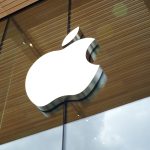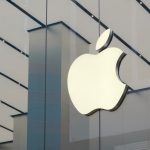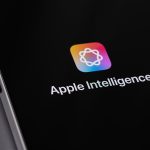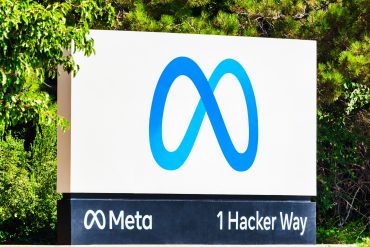
- Earnings Season
- Magnificent 7
- Services Revenue
Apple Reports $102 Billion Quarter as Services Strengthen Growth
7 minute read

Apple closes the fiscal year with record results as services revenue and financial discipline reinforce its position at the center of global technology.
Key Takeaways
- Apple revenue surges 8% to $102.47 billion in fiscal fourth quarter 2025, exceeding analyst estimates and driven by strong iPhone 17 demand and record-breaking services performance.
- Services segment hits record $28.75 billion with 15% growth, representing nearly 30% of total revenue and demonstrating Apple’s successful pivot to high-margin recurring income streams.
- iPhone 17 outsells predecessor by 14% in first 10 days despite initial concerns about minimal AI features, with Pro models driving premium segment growth across U.S. and China markets.
Apple’s Precision Play: How a $4 Trillion Giant Sustains Its Momentum
The architecture of enduring corporate power reveals itself not in moments of disruption but in the mechanics of relentless execution. Apple Inc.’s fiscal fourth-quarter earnings offer a case study in how dominance perpetuates itself—not through revolutionary gestures but through the compounding of marginal advantages across product lines, geographies, and business models.
Revenue reached $102.5 billion for the September quarter, marking an 8 percent annual increase and capping a fiscal year at $416 billion, the highest in company history. Diluted earnings per share landed at $1.85, up 13 percent on an adjusted basis, while gross margins expanded to 47.1 percent. The after-hours share price rose 3 percent, a muted but meaningful signal from institutional capital that views flawless execution as increasingly scarce in an era of geopolitical fragmentation and macroeconomic uncertainty.
What distinguishes this performance is the underlying composition. Apple is navigating a transition that most trillion-dollar enterprises struggle to manage: the gradual shift from hardware dependency toward a hybrid model where services revenue provides ballast against cyclical pressures. Services climbed 15 percent to $28.8 billion—now representing nearly 28 percent of total revenue. This isn’t merely diversification; it’s the construction of an annuity stream that insulates the business from the volatility inherent in device replacement cycles.
The Product Matrix
The iPhone remains the gravitational center, generating $49.0 billion in September quarter revenue, a 6 percent increase that set a record for the period. The iPhone 17 series launched into an installed base of 2.2 billion active devices. Apple Intelligence, the company’s nomenclature for its machine learning capabilities now embedded in iOS 19, has begun influencing upgrade behavior in ways that traditional hardware improvements no longer reliably deliver.
This matters because the smartphone market has fundamentally matured. Unit growth in developed markets hovers near zero; expansion depends on either share gains in competitive geographies or extending replacement cycles among existing users. Apple’s strategy targets the latter, using software differentiation to create upgrade incentives that transcend hardware specifications. Early data suggest Apple Intelligence is driving a 20 percent uptick in upgrade intent.
The Mac business surged 13 percent to $8.7 billion, propelled by M5-chipped MacBook Pros and iPad Pros that have redefined expectations for portable computing. Apple’s decision to design its own silicon continues to compound in value—not merely through performance gains but by enabling product architectures that competitors struggle to replicate.
Wearables, Home, and Accessories declined to $9.0 billion, reflecting category maturation. The Apple Watch and AirPods have achieved market saturation in their core demographics, though these products function as ecosystem adhesives, increasing switching costs and feeding services revenue.
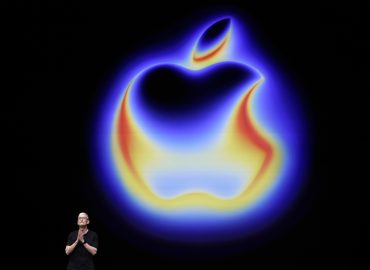
Services: The Strategic Pillar
At $28.8 billion quarterly, services now operates at a scale that would rank among the largest standalone software businesses globally. App Store commissions, Apple Music subscriptions, iCloud storage, and AppleCare warranties create a stream that renews with minimal incremental cost.
Gross margins in services likely exceed 70 percent, compared to hardware margins in the mid-30s. The strategic implication is straightforward: each percentage point of revenue mix shift toward services expands consolidated margins, creating operating leverage that offsets commoditization pressures in hardware manufacturing.
Services also provides insulation against the most significant threat in Apple’s operating environment: China. While Greater China revenue fell to $14.5 billion, missing consensus by more than 10 percent amid Huawei’s resurgence and tariff uncertainty, services in the region posted a record. This bifurcation—hardware softness, services strength—suggests ecosystem loyalty persists even as consumers opt for domestic hardware alternatives.
Capital Allocation Mastery
Operating income rose 10 percent to $32.4 billion; net income increased 86 percent to $27.5 billion when normalized for the prior year’s $10.2 billion European tax provision. Free cash flow enabled $90.7 billion in share repurchases plus a $0.26 quarterly dividend. The share count declined 5 percent annually, amplifying per-share metrics in a business where topline growth has moderated to mid-single digits.
CFO Kevan Parekh inherits a balance sheet that few peers can match: $133 billion in cash and marketable securities against $95 billion in long-term debt, yielding a net cash position approaching $38 billion. With Aa1/AA+ credit ratings, Apple borrows below 3 percent while repurchasing stock at yields exceeding that cost, creating value through financial arbitrage.
The $110 billion authorized buyback program, combined with $111 billion in annual operating cash flow, provides strategic optionality. Apple can accelerate R&D spending, pursue acquisitions, or maintain dividends through recessionary periods without accessing capital markets. In an environment where peers are levering balance sheets to fund AI infrastructure buildouts, Apple’s restraint appears increasingly prescient.
The Intelligence Wager
Management’s December quarter outlook projects mid-to-high single-digit revenue growth, with services continuing to expand at approximately 15 percent. The company’s AI strategy diverges meaningfully from competitors. While others pursue large language models requiring cloud infrastructure and massive capital investment, Apple focuses on on-device processing: real-time translation, contextual awareness in Siri, inference that operates without server round-trips.
This approach aligns with Apple’s privacy positioning and leverages its control of the hardware-software stack, but it also constrains capability relative to cloud-based alternatives. Whether consumers value on-device privacy and speed over the broader capabilities of cloud models will determine if the wager succeeds. Early adoption across 500 million devices provides a substantial testing ground. Management estimates services could capture $10-15 billion in annual AI-related revenue by 2027, primarily through enhanced developer tools, content creation features, and health monitoring capabilities.
Valuation and Risk
At 35 times forward earnings, Apple trades at a premium that reflects both quality and growth expectations. The multiple compresses meaningfully when separating services—likely valued at 20 times earnings given its margin profile—from hardware, suggesting the market is pricing the hardware business at approximately 25 times.
China exposure presents the primary risk. Revenue concentration in a geography experiencing both economic deceleration and geopolitical tension creates volatility that’s difficult to model. Tariff scenarios range from manageable to severely margin-dilutive. The company has diversified manufacturing into India and Vietnam, but these supply chains remain immature.
Yet Apple enters this uncertainty from a position of financial strength unmatched among technology peers. The combination of recurring services revenue, capital return capacity, and brand loyalty provides resilience against scenarios that would damage businesses with weaker foundations. In year fourteen of Tim Cook’s tenure, Apple has evolved from a product company into a platform business that happens to manufacture hardware. The distinction matters because platforms create compounding advantages through network effects and switching costs, while hardware businesses face relentless commoditization. The September quarter suggests that execution, for now, remains intact.


